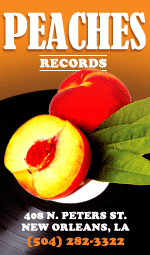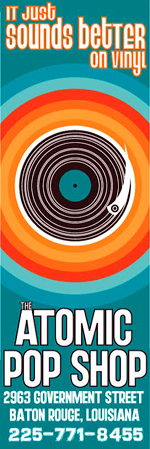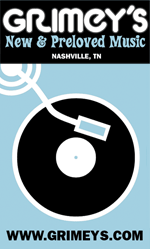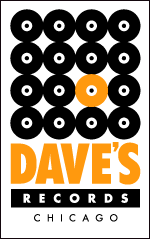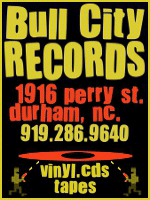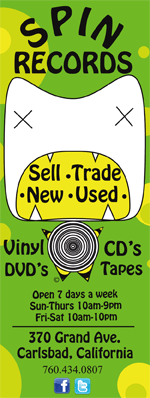
Along with Allan Kozinn and Adrian Sinclair with their multi-volume Paul McCartney biography books, Luca Perasi is becoming one of the foremost chroniclers of the life and music of Paul McCartney. While Perasi has written some books in Italian, he has also written several books in English. There was Paul McCartney: Recording Sessions 1969-2013 and Paul McCartney Music Is Ideas: The Stories Behind the Songs (Vol. 1) 1970-1989.
In 2024 he came out with two more books: Paul McCartney Music Is Ideas The Stories Behind the Songs (Vol. 2) 1990–2012 and Paul McCartney & Wings: Band On The Run (The Story of a Classic Album), all from L.I.L.Y. Publishing. It was only a matter of time before someone wrote an entire book on the Band on The Run album. It is easily McCartney’s best album and one of the best releases of the ’70s.
Perasi covers the album from every imaginable angle and seeks to set the record straight on some of the contradictory stories about the conception and recording of the album. It’s also a beautiful book filled with rare photos in black and white and color, along with other research information. Perasi gives a detailed account of what Wings were up to before the making of the album right through to the post-release legacy of the album. These short books give a fulsome account of the making of an album not found in career-spanning biographies and this album, with its major importance and page-turning story, was made for this format.

For Paul McCartney Music Is Ideas The Stories Behind the Songs (Vol. 2) 1990-2012, Perasi primarily follows the format that he used for volume one. Every album and single from this volume, Tripping the Live Fantastic! through the Kisses on the Bottom releases are covered here. Each entry features the song listing for an album, recording information, a detailed essay, and sources cited throughout the pages, rather than in a footnote compendium at the end of the book. Each song includes a short essay, a shorter recording information box, and a box on the musicians who contributed to the given track. This is a beautiful, over-sized, hardcover book.
Considering Paul McCartney’s place in music as a solo artist, there have been relatively few comprehensive biographies. That is being remedied by Allan Kozinn and Adrian Sinclair with their multi-volume The McCartney Legacy books. The McCartney Legacy Volume 2: 1974–80 was recently released and picks up where the last book, The McCartney Legacy Volume 1: 1969 –73, left off in delivering what is amounting to the definitive biography of the solo career of the ex-Beatle. Both books are from Dey Street Books.

Volume one began during the waning years of McCartney’s time in The Beatles in the late-’60s and ended in 1973, when McCartney released his best post-Beatles recording up until that time, Band On The Run. Given what a great read the first volume was and that it covered a key time in his career and life and in pop music in general, volume two would be hard to top, but that is exactly what the authors have done.
This book brings the story up to 1980, is an even longer book and effectively begins to chronicle the end of McCartney’s post-Beatles group Wings. The in-depth research and sourcing in this volume are even more impressive than in the first volume. The first book in the series was 720 pages and this volume clocks in at 786. Yet, at 1,500 pages, the books are a breezy read that are hard to put down. The two authors find the right balance of in-depth scholarship to satisfy even the most hardcore McCartney fan, while creating a narrative that the more casual McCartney, Beatles, or music fan will also thoroughly enjoy.

Elliot Mintz held a unique place in the post-Beatles life of John Lennon and his wife Yoko Ono, which is chronicled in We All Shine On: John, Yoko, and Me (Dutton). The West Coast-based DJ invited Ono onto his radio show after hearing her debut solo album Fly in 1971. Ono sensed a kindred spirit in the young DJ and the two began a lengthy telephone relationship. Eventually, Ono had her husband join in on the calls. After speaking together and separately, the three met.
Mintz eventually went to work for the Lennons in official and sometimes unofficial capacities. After Lennon’s death, Mintz moved into the Dakota, the Lennons’ home in Manhattan, and began going through and chronicling Lennon’s extensive archive. His relationship with Yoko and the Lennons’ son Sean would go on for many years. Although he no longer works for the Lennons, he maintains a close relationship with Sean, but not as much with Ono since she has become older and is not as much in the public eye or actively creating art or stewarding Lennon’s works from the past though various reissues and archival projects.
Mintz honestly recounts his adventures and misadventures with the two and seemed as baffled as anyone for why they took him under their wing as one of their closest and most trusted friends and advisors. This is a surprisingly tempered account of his relationship with the Lennons, eschewing hyperbole and any attempt to make himself more important in the John and Yoko story than he was. For anyone who wants to get to know more about Lennon’s post-Beatles years, this book is a welcome addition.
There have been some fine books that delve deep into the recordings of The Beatles. Several have offered either diary-formatted accounts or reference manuals that seem aimed at musicians and recording engineers or producers, but which can also be understood and enjoyed by non-technical fans of the group.
Mark Lewisohn’s landmark The Beatles Recording Sessions, initially released in 1988, is the go-to book for the most in-depth, informed, and insider take on the sessions, due to Lewisohn’s unparalleled scholarship and full access to all the original recordings made by The Beatles.
Another more recent attempt to provide an in-depth analysis of the recording of the group’s music is The Beatles Recording Reference Manuals by Jerry Hammack. The five-volume series laid out all the equipment and instruments used by the group and the studios where they recorded. While in some ways it covers some of the same ground as Lewisohn’s book, it’s not a narrative diary and instead has many lists and some history on every recording The Beatles made.

Hammack’s newest book, The Beatles’ Recording Techniques: Recreating The Classic EMI Recording Studios Sound In Your Home Studio (Gearfab) focuses more on the techniques and offers a more concise overview that features more black-and-white and color illustrations and photographs.
The book is broken down into 6 sections: the EMI Recording Studios tool kit; EMI Recording Studios in your DAW (Digital Audio Workstation); emulating EMI Recording Studios practices; recording methods; miking and recording techniques; and mixing and mastering, along with an introduction and an afterword. Given the more visual presentation here and the more compact account of the group’s recordings, this book doesn’t replace Hammack’s previous multi-volume series, but works as a fine companion and a more accessible and concise short-hand guide.
There have been books written on various albums by The Beatles, but few that take on one single release. That is the case with Let Me Take You Down: Penny Lane and Strawberry Fields Forever (University of Minnesota Press) by Jonathan Cott, which covers the double-A-side single “Strawberry Fields Forever”/”Penny Lane”, released by The Beatles in February of 1967.
The book’s author was the co-author of the original booklet that came with non-U.S. editions of the Let It Be album in 1970. He also interviewed John Lennon, first in 1969 and just before his death in 1980, and interviewed Paul McCartney in 2009. He was closely associated with Rolling Stone magazine and has written over 40 books.

This book includes a roughly 60-page introduction and then enlists five fellow avatars to dissect and discuss the two songs in depth. They are jazz musician Bill Frisell; Jonathan F. P. Rose, an urban planner, record producer, and environmentalist; Jungian analyst Margaret Klenck; actor, Buddhist, musician, and philanthropist Richard Gere, and multi-media artist Laurie Anderson.
While Cott offers some fascinating insights and well-read context to the songs, his conversations with the five people mentioned above are what make the book so interesting. While they all have serious credentials, the observations are both serious and playful. Their open-mindedness and ability to look at the songs from so may different angles make for enlightening revelations that are highly accessible, thoughtful, and fun.
If you would like to meet some of these authors and obtain signed copies of their books, they will be appearing at The Fest For Beatles Fans from March 28th through the 30th at the Hyatt Regency in Jersey City, New Jersey. Allan Kozinn and Adrian Sinclair will be there as well as other authors with books that have been published in the last few years related to The Beatles, including Laurie Kaye, Madeline Bacaro, Deirdre Kelly, Ken Womack, and Bruce Spizer.
Musical headliners include Jim McCarty of The Yardbirds, Simon Kirke of Free and Bad Company, Colin Hanton of The Quarrymen, and many others. The Fest website will detail all the activities and the dozens of guests, panelists and others appearing over the weekend.





















